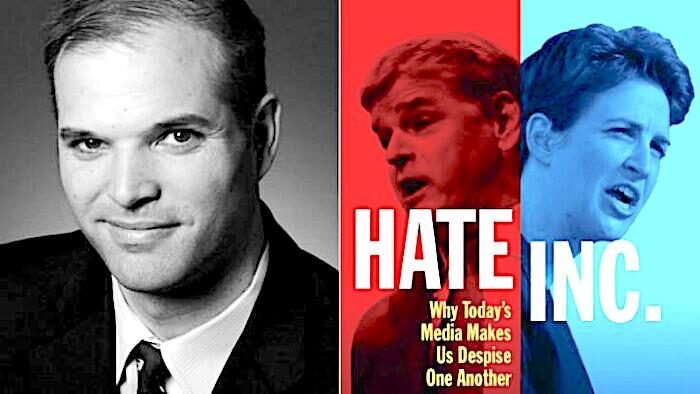A UTOPIA OF DIVISION
News in the Trump years became a narrative drama, with each day advancing a tale of worsening political emergency, driven by subplots involving familiar casts of characters, in the manner of episodic television. It worked, but news directors and editors hit a stumbling block. If you cover everything like there's no tomorrow, what happens when there is, in fact, a tomorrow?
The innovation was to use banner headlines to saturate news cycles, often to the exclusion of nearly any other news, before moving to the next controversy so quickly that mistakes, errors, or rhetorical letdowns were memory-holed.
The American Napoleon generated controversies at such a fantastic rate that stations like CNN and MSNBC (and Fox too) were able to keep ratings high by moving from mania to mania, hyping stories on the way up but not always following them down. The moment the narrative premise of any bombshell started to fray, the next story in line was bumped to the front.
News outlets paid off old editorial promises with new headlines: Ponzi journalism.
This technique of using the next bombshell story to push the last one down a memory-hole — call it Bombholing — needed a polarized audience to work. As surveys by organizations like the Pew Center showed, the different target demographics in Trump's America increasingly did not communicate with one another. Democrats by 2020 were 91 percent of the New York Times audience and 95 percent of MSNBC's, while Republicans were 93 percent of Fox viewers. When outlets overreached factually, it was possible, if not likely, that the original target audience would never learn the difference.
This reduced the incentive to be careful. Audiences devoured bombshells even when aware on a subconscious level that they might not hold up to scrutiny. If a story turned out to be incorrect, that was okay. News was now more about underlying narratives audiences felt were true and important.
For conservatives, Trump was saving America from a conspiracy of elites. For "liberal" audiences, Trump was trying to assume dictatorial power, and the defenders of democracy were trying to stop him.A symbiosis developed. Where audiences once punished media companies for mistakes, now they rewarded them for serving up the pure heroin of shaky, first-draft-like blockbusters. They wanted to be in the trenches of information discovery. Audiences were choosing powerful highs over lasting ones.
Moreover, if after publication another shoe dropped in the form of mitigating information, audiences were disinterested, even angry. Those updates were betrayals of the entertainment contract, like continuity errors. Companies soon learned there was a downside to once-mandatory ethical practices. Silent edits at newspapers became common, and old standards like the italicized editor's note at the bottom of the page letting you know this or that story had been "updated" began to disappear.
The political impact of all this was that the news watcher in the Trump years became more addicted to the experience of being outraged, while retaining less about specific reasons for outrage. Audiences remembered some big stories and big themes, but stopped digesting each story on its own, rarely bothering to look back at the meaning of various manias after they'd died down.
As George Orwell understood when he created the "memory hole" concept in 1984, an institution that can obliterate memory can control history. In the Trump era, news audiences volunteered to stop the disobedient act of remembering.
They brought a pure, virginal belief to watching news, and agreed to unquestioningly accept any new versions of the past put forward. This was Hate Inc. brought to its logical conclusion. Fox and MSNBC already knew how to monetize anger by setting audiences against one another. The innovation of the Trump era was companies learned they could operate on a sort of editorial margin, borrowing credibility for unproven stories from audiences themselves, who gave permission to play loose with facts by gobbling up anonymously-sourced exposes that tickled their outrage centers.
Mistakes became irrelevant. In a way, they were no longer understood as mistakes.
The new paperback edition of Hate Inc. has gone to print (for details about where to find the book, click here).




Comment: Mainstream news is a scam, a change-agent for public mindset and habitual programming: Tune in and tune out.